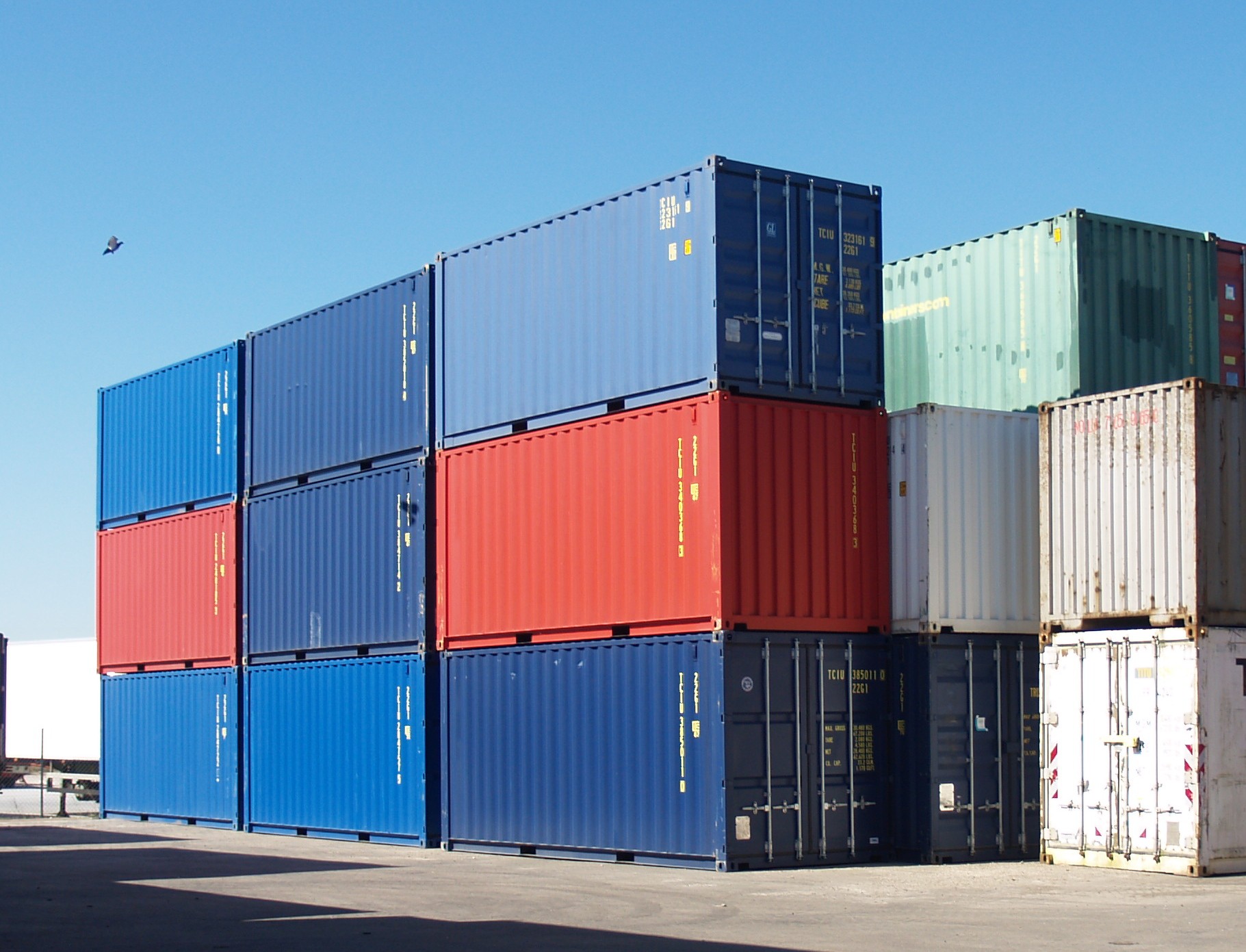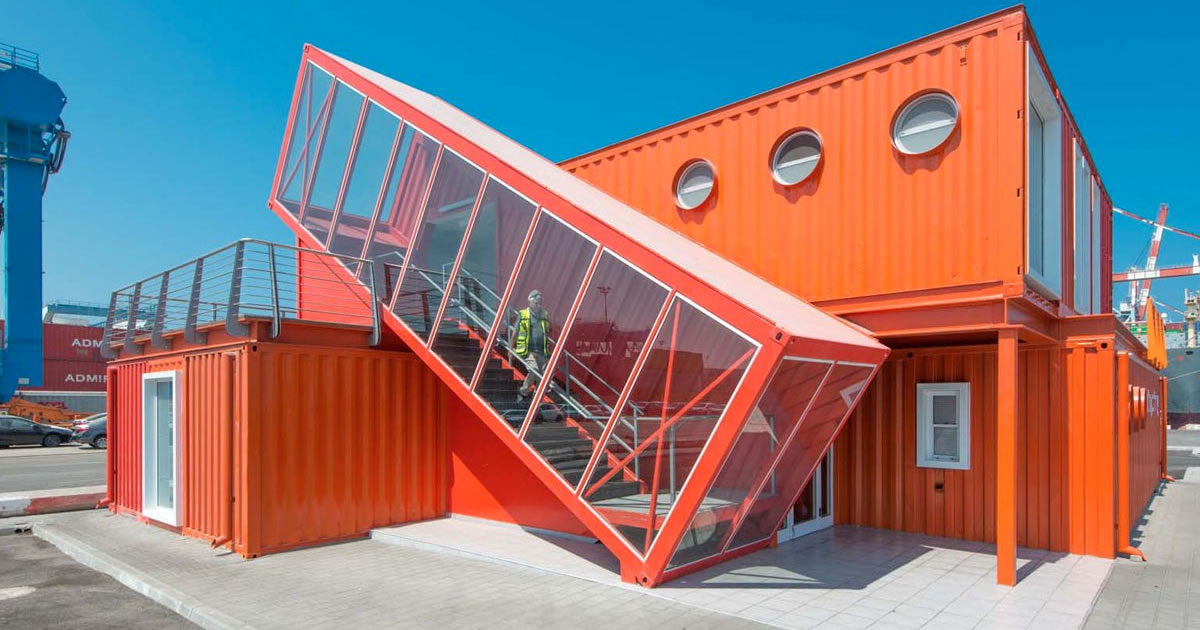Shipping containers have become the backbone of global trade, enabling the efficient movement of goods across continents and oceans. They are designed to withstand the rigors of long-distance travel, ensuring that products reach their destinations safely and securely. However, their significance goes beyond mere convenience and protection. Sustainable transportation is now more important than ever. With increasing concerns about carbon emissions and environmental degradation, finding eco-friendly alternatives to traditional cargo transport has become imperative. Shipping containers offer a surprisingly effective solution to this challenge. By optimising logistics and embracing green initiatives, these containers have transformed the freight industry into one that is more sustainable.
In the following sections, we will delve deeper into the evolution of shipping containers, their modifications for sustainability, and their contribution to green initiatives in the freight industry.

The Evolution of Shipping Containers
Shipping containers have come a long way since their inception, revolutionising the transportation industry and playing a surprising role in eco-friendly cargo transportation.
Advantages of Shipping Containers for Sustainable Freight Transport
Shipping containers offer several advantages that make them ideal for sustainable freight transport:
Reduced Waste: Containerisation significantly reduces waste in cargo transportation. Before the introduction of shipping containers, goods were often packed in wooden crates or sacks that were discarded after each trip. With containers, goods can be securely packed and transported multiple times without the need for additional packaging materials.
Lower Emissions: The use of shipping containers has led to a reduction in emissions in the freight industry. Containers are designed to fit snugly together, reducing wind resistance during transport. This results in improved fuel efficiency and lower carbon emissions from ships, trains, and trucks.
Energy Efficiency: Containerisation allows for efficient use of energy throughout the supply chain. By optimising loading processes and maximising space utilisation, containers help reduce the number of trips required to transport goods. This not only saves fuel but also minimises energy consumption in handling and storage facilities.
Shipping Containers: A Green Solution
Shipping containers themselves are inherently eco-friendly. They are designed to withstand harsh marine environments, which means they are built to last. This durability reduces the need for constant replacement and minimises waste generation. In fact, shipping containers can be reused for decades, providing a sustainable solution for cargo transportation.
Furthermore, the standardisation of shipping containers has led to increased efficiency in logistics operations. These uniform units can be easily loaded onto different modes of transport such as ships, trains, and trucks, reducing the need for additional handling and minimising fuel consumption.
Collaboration with Sustainable Transport Organisations
Collaboration between shipping companies and sustainable transport organisations is crucial in promoting eco-friendly practices. Many shipping companies have partnered with organisations such as the Green Freight Asia (GFA), Clean Cargo, and the Sustainable Shipping Initiative (SSI) to work towards common sustainability goals.
Through these partnerships, shipping companies gain access to valuable expertise and resources that help them identify and implement sustainable practices. By sharing best practices and collaborating on research and development projects, these organisations contribute to the continuous improvement of the industry’s environmental performance.
Promoting Multimodal Transportation
One of the key advantages of shipping containers is their ability to facilitate multimodal transportation. Containers can be easily transferred from one mode of transport to another, enabling seamless movement across different types of infrastructure.
By combining different modes of transport, such as ships, trains, and trucks, container shipping promotes a more sustainable transportation system. This approach reduces reliance on single modes of transport, thereby decreasing congestion, improving efficiency, and reducing carbon emissions.
The use of intermodal terminals and rail connections further strengthens multimodal transportation. These facilities enable the smooth transfer of containers between various modes of transport, minimising unnecessary road journeys and enhancing overall sustainability.
In conclusion, shipping containers not only provide a cost-effective solution for cargo transportation but also contribute significantly to green initiatives in the freight industry. Through initiatives such as slow steaming, alternative fuels, and emission reduction programs, shipping companies are actively working towards reducing their environmental impact.
Collaboration with sustainable transport organisations further enhances these efforts by fostering knowledge exchange and promoting best practices.
Additionally, the ability of shipping containers to enable multimodal transportation plays a vital role in creating a more sustainable logistics system.
Challenges and Future Outlook
Implementing sustainable freight transport using shipping containers comes with its fair share of challenges. However, these challenges also present opportunities for innovation and improvement. Let’s explore some of the key challenges and potential solutions in this field.
Infrastructure Limitations: One of the primary challenges is the lack of infrastructure to support sustainable cargo transportation using shipping containers. Existing ports and transportation networks may not be equipped to handle the increased demand for eco-friendly practices. However, investment in upgrading infrastructure and implementing green technologies can address this challenge.
Limited Adoption:While there are numerous initiatives promoting sustainable shipping practices, their adoption by the industry as a whole remains limited. Many companies are still hesitant to invest in eco-friendly technologies due to concerns about costs and profitability. To overcome this challenge, it is crucial to create incentives and regulations that encourage businesses to embrace sustainable methods.
Technological Advancements: The future outlook for shipping containers in eco-friendly cargo transportation looks promising, thanks to ongoing technological advancements. Innovations such as electric-powered container ships, hydrogen fuel cells, and autonomous vessels hold tremendous potential for reducing carbon emissions and increasing efficiency.
Collaboration and Partnerships: Another crucial aspect of overcoming challenges in sustainable freight transport is fostering collaboration and partnerships among various stakeholders. This includes collaboration between shipping companies, port authorities, governments, and environmental organisations. By working together towards a common goal, these entities can share resources, knowledge, and expertise to drive positive change.
Circular Economy Approach: To further enhance sustainability in shipping container transportation, adopting a circular economy approach is essential. This involves designing containers that are easily recyclable or reusable at the end of their lifespan. It also encourages the use of renewable materials in container construction.
Conclusion
In a world where sustainability is becoming increasingly important, shipping containers have emerged as unexpected heroes in the realm of eco-friendly cargo transportation. Throughout this article, we have explored the evolution of shipping containers and the modifications made to them for sustainable practices.
We have also discussed how shipping containers contribute to green initiatives in the freight industry, promoting multimodal transportation and enabling a more efficient and environmentally friendly way of moving goods.
Despite the challenges faced in implementing sustainable freight transport, such as emission reduction and alternative fuel adoption, the future looks promising. With ongoing developments in technology and innovative solutions, shipping containers will continue to play a vital role in reducing the carbon footprint of cargo transportation.
In conclusion, shipping containers are not just metal boxes but powerful tools that can revolutionise the way we transport goods sustainably. By embracing their potential and continuing to prioritise eco-friendly practices, we can create a greener and more sustainable future for our planet.




